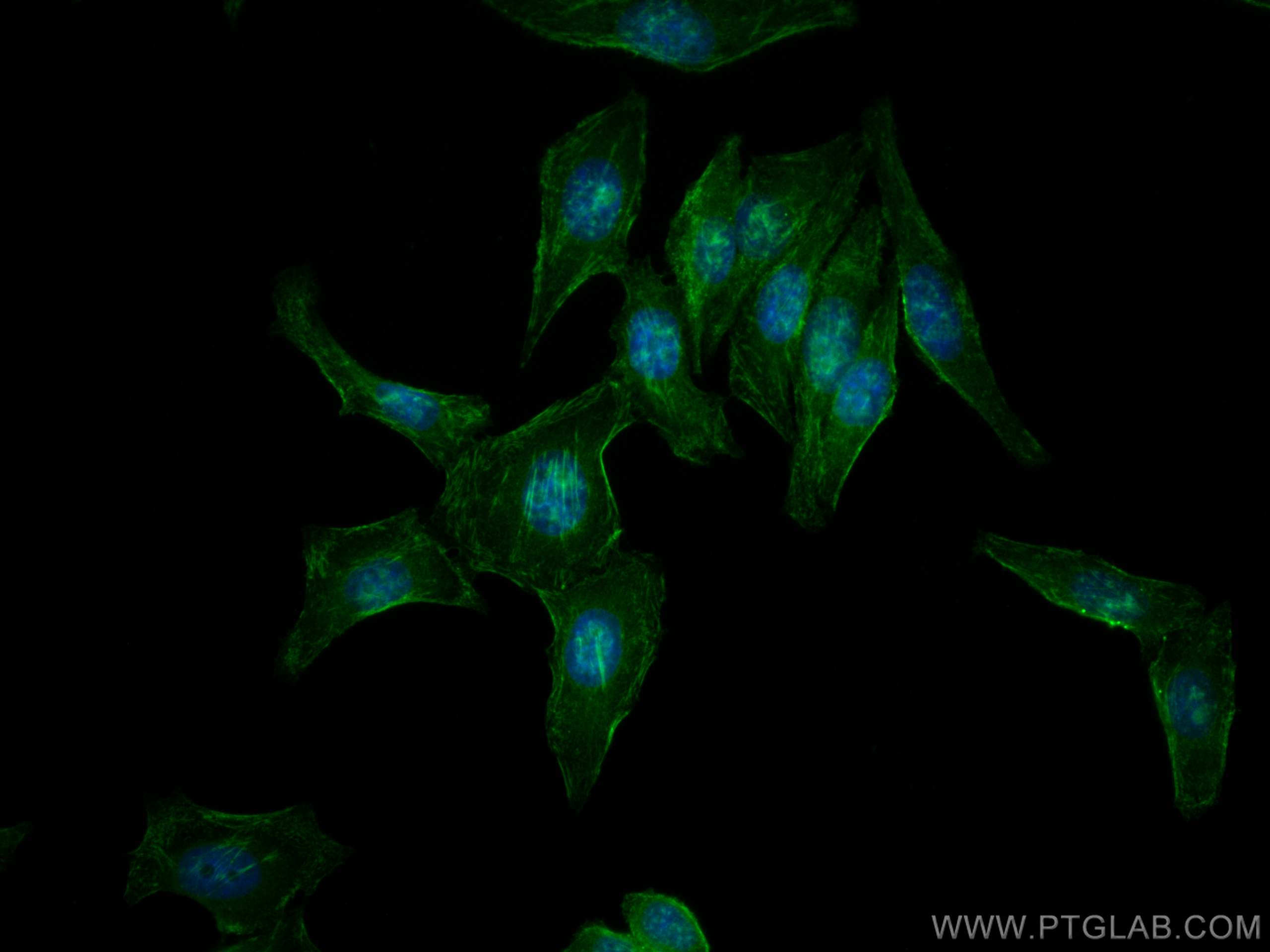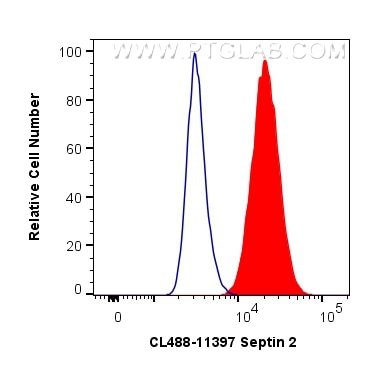- Phare
- Validé par KD/KO
Anticorps Polyclonal de lapin anti-Septin 2
Septin 2 Polyclonal Antibody for FC (Intra), IF
Hôte / Isotype
Lapin / IgG
Réactivité testée
Humain, rat, souris
Applications
IF, FC (Intra)
Conjugaison
CoraLite® Plus 488 Fluorescent Dye
N° de cat : CL488-11397
Synonymes
Galerie de données de validation
Applications testées
| Résultats positifs en IF | cellules HepG2, |
| Résultats positifs en cytométrie | cellules MCF-7 |
Dilution recommandée
| Application | Dilution |
|---|---|
| Immunofluorescence (IF) | IF : 1:50-1:500 |
| Flow Cytometry (FC) | FC : 0.40 ug per 10^6 cells in a 100 µl suspension |
| It is recommended that this reagent should be titrated in each testing system to obtain optimal results. | |
| Sample-dependent, check data in validation data gallery | |
Informations sur le produit
CL488-11397 cible Septin 2 dans les applications de IF, FC (Intra) et montre une réactivité avec des échantillons Humain, rat, souris
| Réactivité | Humain, rat, souris |
| Hôte / Isotype | Lapin / IgG |
| Clonalité | Polyclonal |
| Type | Anticorps |
| Immunogène | Septin 2 Protéine recombinante Ag1946 |
| Nom complet | septin 2 |
| Masse moléculaire calculée | 41 kDa |
| Poids moléculaire observé | 45 kDa |
| Numéro d’acquisition GenBank | BC014455 |
| Symbole du gène | SEPT2 |
| Identification du gène (NCBI) | 4735 |
| Conjugaison | CoraLite® Plus 488 Fluorescent Dye |
| Excitation/Emission maxima wavelengths | 493 nm / 522 nm |
| Forme | Liquide |
| Méthode de purification | Purification par affinité contre l'antigène |
| Tampon de stockage | PBS avec glycérol à 50 %, Proclin300 à 0,05 % et BSA à 0,5 %, pH 7,3. |
| Conditions de stockage | Stocker à -20 °C. Éviter toute exposition à la lumière. Stable pendant un an après l'expédition. L'aliquotage n'est pas nécessaire pour le stockage à -20oC Les 20ul contiennent 0,1% de BSA. |
Informations générales
SEPT2 belongs to a family of septins, GTP-binding proteins that are a component of the cytoskeleton. Septins can assemble into intracellular structures of various shapes and are known to influence membrane stability, forming diffusion barriers and serving as scaffolds.
What is the molecular weight of SEPT2? Is SEPT2 post-translationally modified?
The molecular weight of SEPT2 is 45 kDa. In a cellular context, SEPT2 forms hetero-hexamers and hetero-octamers with other septins. These hexamers and octamers further assemble into high-order structures such as filaments and rings. SEPT2 can be phosphorylated on Ser218 by casein kinase 2 (PMID: 19165576) and can also be SUMOylated (PMID: 29051266).
What is the subcellular localization of SEPT2?
SEPT2 forms a diffusion barrier and localizes to the primary cilium; in some cell types, it has been found at the transition zone/basal body (PMID: 20558667), while in others localized to the axoneme (PMID: 23572511). During cell division, SEPT2 accumulates near the contractile ring from anaphase through telophase, and finally condenses into the midbody (PMID: 9203580). In interphase cells, SEPT2 was found to associate with polyglutamylated microtubules (PMID: 18209106) and can affect microtubule dynamics via interaction with MAP4.
What is the tissue expression pattern of SEPT2?
While some septins have tissue-specific expression profiles, SEPT2 is ubiquitously expressed (PMID: 22314400).
Protocole
| Product Specific Protocols | |
|---|---|
| IF protocol for CL Plus 488 Septin 2 antibody CL488-11397 | Download protocol |
| FC protocol for CL Plus 488 Septin 2 antibody CL488-11397 | Download protocol |
| Standard Protocols | |
|---|---|
| Click here to view our Standard Protocols |



